Beating the Elements
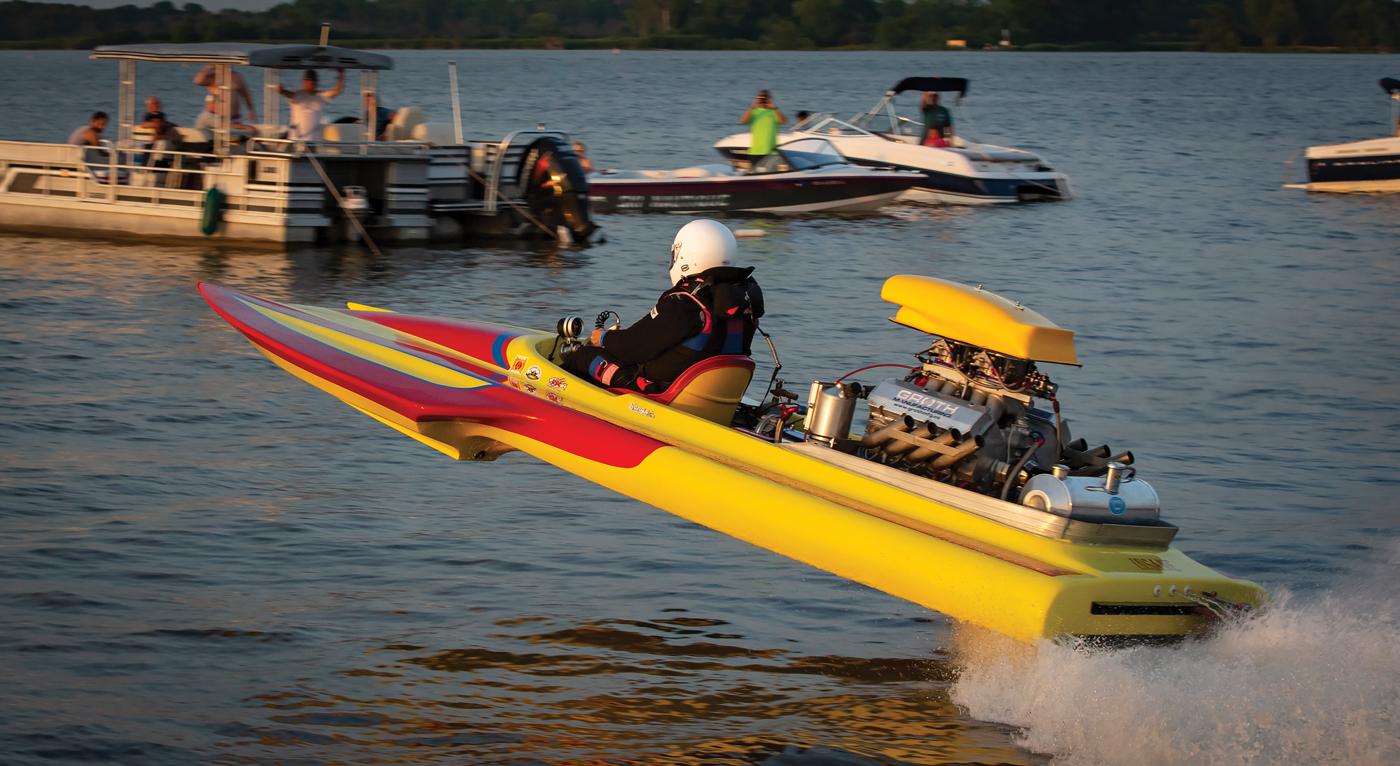
How to guard against the corrosive nature of racing on water.
All forms of motorsports are tough on parts, but racing in a marine environment takes that wear-and-tear up to another level. The corrosive effects of water and saltwater, the forces generated from bouncing across a liquid surface, can all conspire to send marine racing engines toward an early exit.
Although the parts used in, say, drag boat engines are not much different from those used in the typical land-based drag car, factors such as clearances, materials, and safety features specific to boats can affect engine builds.
“It’s a brutal environment,” noted Frank Beck of Beck Racing Engines, Phoenix, Arizona. “You’re constantly under heavy load. Depending on who and what the application is, you’re running between 4,000 and 7,000 rpm. You’re jumping out of the water, coming back down and biting hard, and if the guy’s not working the throttle right, it’s a pretty good shock to the system.”
John Groth of Groth Manufacturing in Carpentersville, Illinois, is a long-time boat racer who still competes regularly in drag boat racing at Blarney Island on Grass Lake, Antioch, Illinois. “The difference between cars and boats is the cars get to speed the last half of the track. The boats get it right now,” Groth said “The G-forces on the boats are a lot worse than on a car because you get the speed right now.”
Dreadnought Engineering
The unique factors at work in a marine motorsports environment tend to push parts manufacturers and engine builders toward over-engineering their products.
CP-Carrillo in Irvine, California, manufactures pistons, connecting rods, and hardware for high-performance applications, including many off-the-shelf and custom marine products. “We design custom pistons and rods for the boat racing industry every week,” said Bryan Moreland. “It comes in cycles as the sanctioning bodies and seasons come to a close and open and people hurt parts through the weekend and such. In general, we’re always designing parts for boats.
“There’s drag racing, there’s circle boat racing, there’s pleasure boats, there’s offshore, and everything in between. Basically, a lot of these things are over-engineered, and with just the safety margin alone, there’s no real advantage to designing a super lightweight connecting rod for any kind of boat racing, unless it’s a naturally aspirated drag race application,” Moreland said.
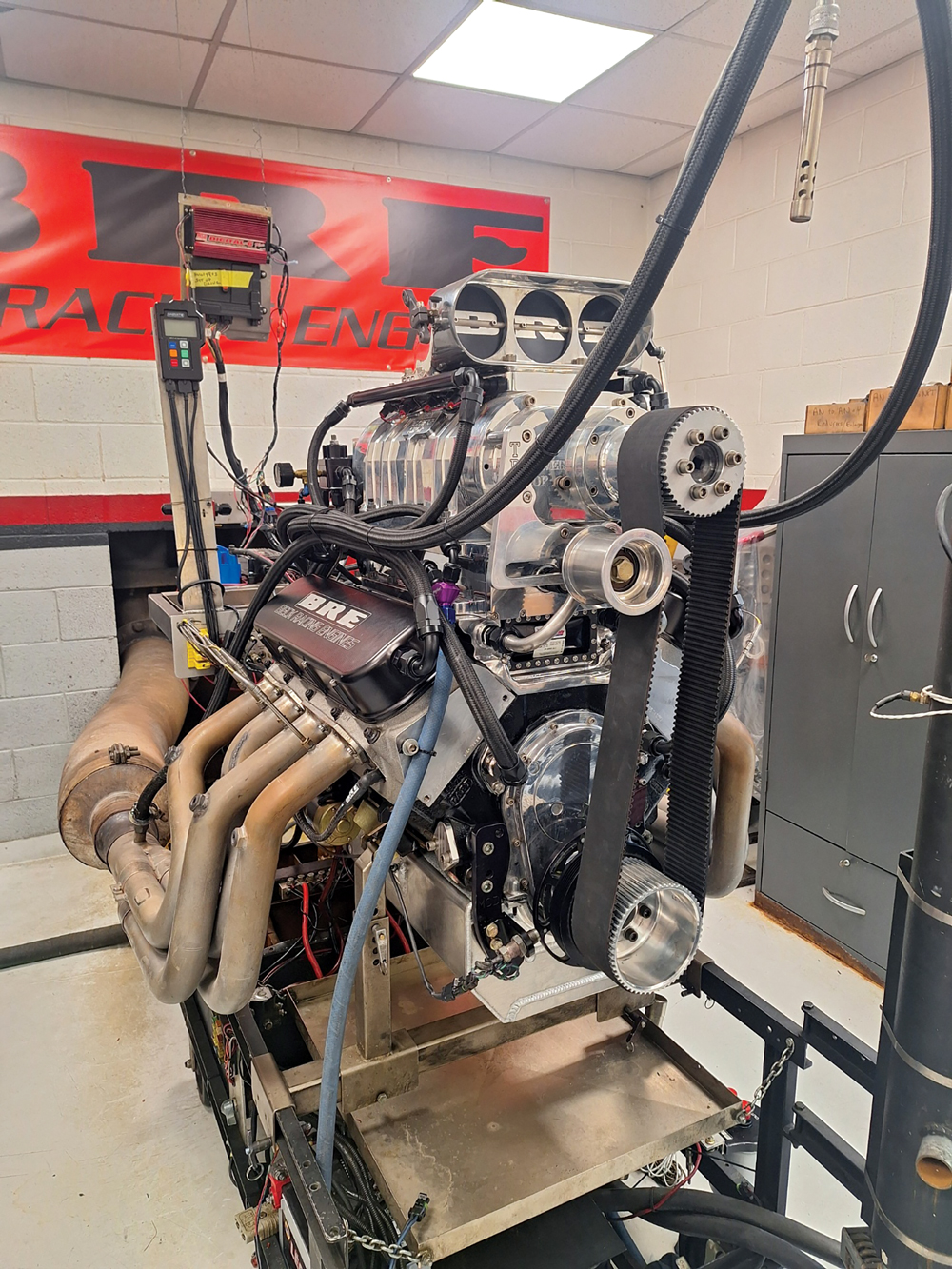
Dynamic loading—when the prop is free spinning when out of the water and then grabbing again when it’s back in the water—is one of those marine racing factors that parts makers have to consider. “You just have to beef up the parts knowing that it’s going to hit some dynamic loading, where it’s going to try to pull the motor down when the prop comes out of the water,” said Richard Batchelor of CP-Carrillo. “It’s similar to off-road stuff, where they’re going through the woods and they’re not letting off. Because those guys don’t let off when they come out of the water. They just stick into it.”
The type of cooling system in use also plays a role in boat engine parts design. “On the piston side, it’s not such a problem for designing lighter weight,” Moreland explained. “You can increase the strap thickness under the wrist pin, and if the thing’s coming in and out of the water and it’s yanking on it and it’s spinning a ton of rpm, you can feel safe and comfortable with that just by the thickness of the area under the wrist pin. The rest of the piston can be thin and light and can be designed according to whatever it’s being used for.
“The one thing that we look at for piston design is whether it’s an open or closed cooling system,” he continued. “If it’s a closed cooling system and it maintains a temperature, and it might have a thermostat, and it runs at 150 or 170 degrees or whatever it is, that makes a bigger difference to us. Or whether or not the block is aluminum or the block is iron, those set up diametrical clearances for us, and we make accommodations and allowances for that. If it’s cold water coming in and you’re running the thing in a river, like a jet drive and it’s going to be 115 to 120 degrees, cold water, you can’t do much about it. You have to increase the clearance that you give it because the block isn’t going to grow quite as much as it would otherwise.”
Given the heavy load on the engine under racing conditions, a well-thought-out lubrication system is another essential. “The biggest thing we do on all our endurance applications—whether it be the NASCAR Tour engines we did back in the day, or our Bonneville engines, or marine engines, off-road Trophy Truck Class 1 stuff—we flood ’em, basically,” Beck said. “Spring oilers lubricate the entire upper valvetrain, valve springs, rocker assemblies. We have our billet valve covers made with an oiler running down the outside channel, and it squirts it all, every single valve spring, and it’s strategically positioned with a nice spray pattern. We also run piston oilers to help lubricate the wrist pins, but mostly to cool the piston. We’re shooting 200-plus degree oil temp up there, but it’s 1,400 degrees on the other side of that piston, so it’s thinking it’s getting icicles, so it’s a happy camper. Less chance of detonation that way, so lubrication is the key. Just flood it everywhere.”
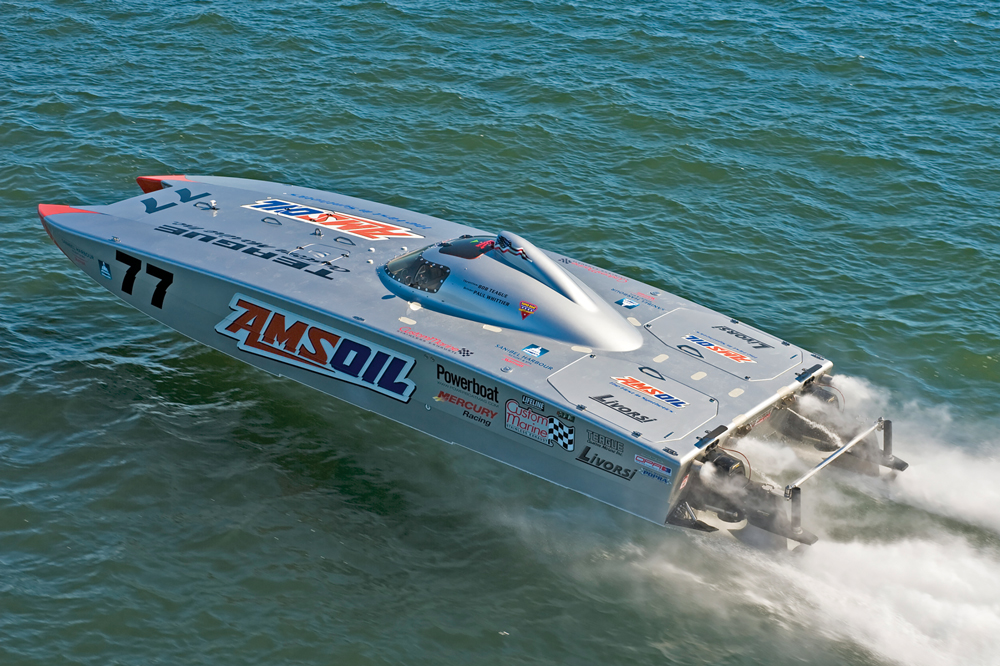
Engine building for marine competition is not just about speed, but safety as well. And it all ties in with how the boat is rigged. “There is a thing called a whirlaway. What the whirlaway does, let’s say your motor just stops and you’re doing 180 mph,” Groth said. “The whirlaway has a spring on it inside the gearbox you’re using that allows the prop to free-wheel instead of just lock up. If it locks up, it’s flipping the boat.
“You see the crashes in the pro races with the flat-bottom boats, the blown alcohol flat-bottom boats. You get two bounces for free. That third one, you’re going over.”
Should things go awry during a race, a proper engine package ensures the driver won’t be dragged down to Davey Jones’ Locker. “We use breakaways because we’ve seen the motors come through the capsule in a wreck and kill the driver,” Groth said. “They’re V-shaped breakaways. The bottom of it is drilled so it pull-tests at a certain amount of pressure. After a while you have to replace them because they will break. But what happens is, the cable that goes to the throttle, the cable that goes to the parachute, any cables you’ve got going to anything toward the motor, it all breaks away when the capsule breaks away in a crash. That way the motor isn’t coming with the capsule.”
Details Matter
For racers just easing into the marine motorsports environment, attention to detail is crucial in keeping an engine operating for the long haul.
“Any time that we take information from a customer, we’re asking them to give us as much detail as humanly possible,” Moreland said. “If they have enough insight to be able to manipulate our design approach, then that’s always welcome. If they don’t, and they want to rely on us as suppliers to do the legwork for them and know what they should need, a lot of times that’s the case, too. They rely on us for our experiences, and they just need to answer the questions that we mentioned before.
“Is it an offshore thing? How long of a duration is the race? Are you going to tear the thing down after every race, or are you going to run it for two years and never look at it? Is it cold water? How much rpm does it turn? What’s the piston assembly weight? Oil—dry sump, wet sump—that makes a big difference for ring package and some of the other oiling characteristics,” Moreland added.
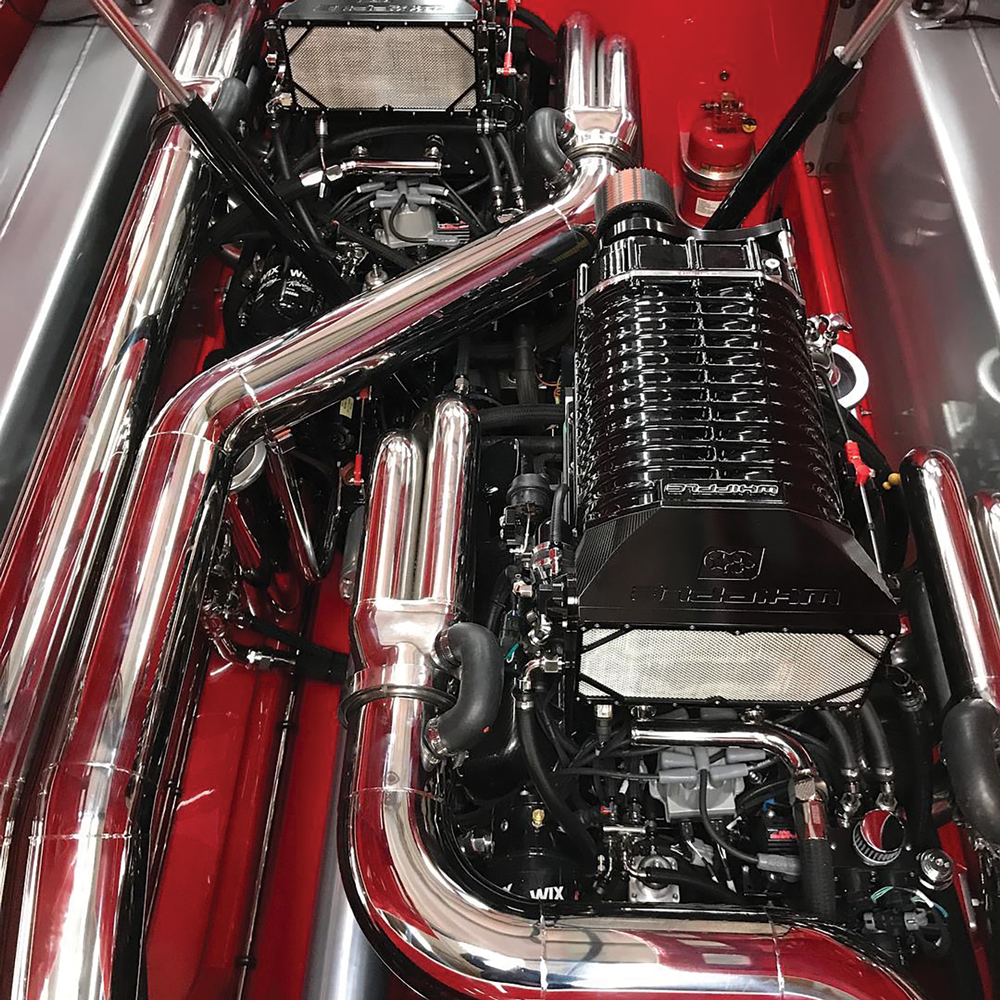
For John Groth’s racing activities, keeping the engine from running at the ragged edge has paid big dividends. “Buy a motor that’s faster than the class you want to race. That way it will last you a long time, because you’re not going to have it on Kill all the time.” Groth runs a 632 Dart tall deck, with a 0.938 lift on the cam, 16:1 compression, and 1150 Dominator carbs. It produces about 1,485 horsepower, he said.
“That motor that I’ve got, that 632, that’s 17 years old. But I’m only running 70% of the power. Let’s say you’re racing an 8.4 second dial-in class, which is Super Comp. Buy a 7-second motor, or a 6.5-second motor. The thing will last you forever.”
Not surprisingly, Groth also emphasized the importance of proper maintenance. “Send your fuel pump in every year, whether it works or not, to put new bearings in it,” he said.
Experience has taught Beck that there’s no skimping on quality parts in a marine racing environment. Only top-quality, heavy-duty parts will do. “Start with a great product, a proven package that’s been dyno tested and tuned. We spend a lot of time on the dyno really sorting it out, not just the wide-open stuff that most people generally do,” he said.
Teams may be competing on water, but racers want no part of H2O seeping into the fuel system. Such infiltration can dramatically shorten the life of the engine. “In diesel applications, we expect to see a three times increase in the life of injection components by simply improving fuel filtration,” said Jake Hopkins of FASS Diesel Fuel Systems, Marthasville, Missouri. “Per CAT, diesel fuel—what our filtration systems are designed for—contains at least 10% air when stationary. In racing applications, marine or otherwise, that 10% figure will go much, much higher over the course of a race. In fuel, entrained air and vapor can alter injection timing, rob horsepower, slow throttle response, damage injectors, reduce efficiency, and more.
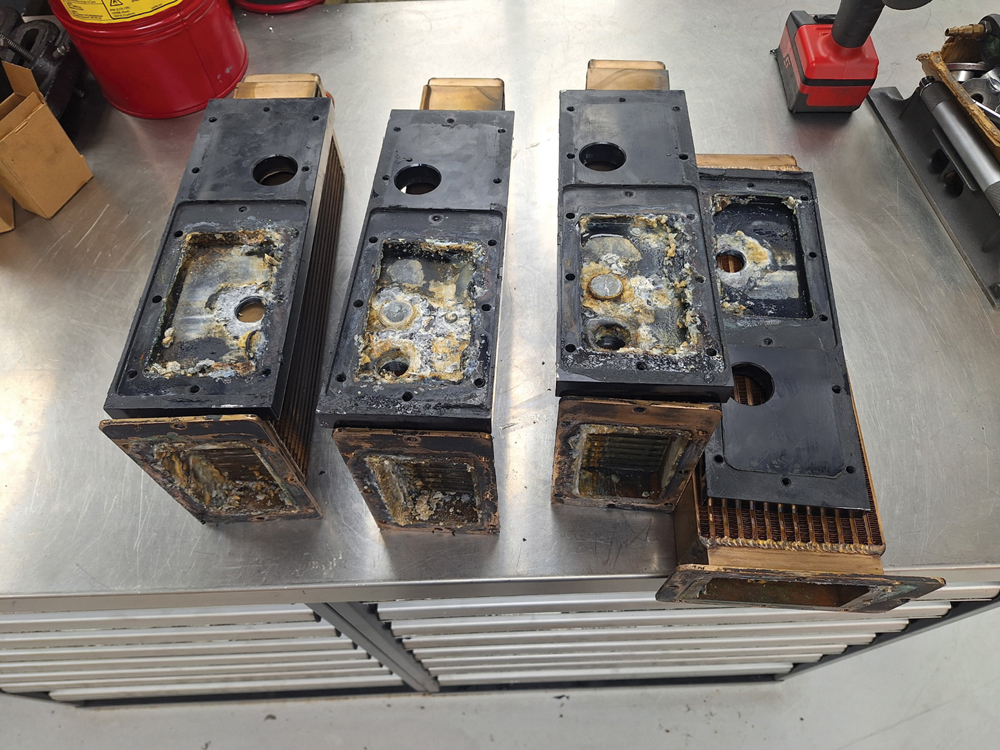
“Beyond air and vapor, water-in-fuel is a particularly notorious problem. Even a single tank of heavily contaminated fuel can wreak havoc on an engine,” Hopkins said. “To safeguard against this, we engineered our Extreme Water Separator (XWS) to eliminate more than 99%, third party verified, of the water from diesel fuel. In cases of extreme water contamination, our XWS acts as a fail-safe, shutting your engine down and preventing catastrophic damage.
“While other water separators can allow water to pass through once, they reach their saturation point. Ours will not, potentially saving owners thousands of dollars in unnecessary repairs,” Hopkins added.
Keeping moisture out of the oiling system is similarly important. “We want the water temp to run as cold as possible. We do run a thermostatically controlled bypass for the oil cooler because we want the oil temp to be above 212 degrees,” Beck said. “Because water boils at 212, we want to steam it out of the oil and get it out of there, get it evaporated out of the breathers. It’s less chance of rust and corrosion and wear and tear on your valvetrain.”
When fighting against the elements in a marine racing series, it pays not to underestimate the care and work required. “The saltwater environment is obviously the worst-case scenario. We can hard anodize cylinder heads, but they still tend to rot out over time,” Beck said. “The guys need to be in a regimen to flush it and use a Salt-Away product to help break down the salt. Even with some of the teams that are pretty good about that, it just still seems to pocket in certain areas. I can’t over-emphasize enough to maybe just run it on the garden hose for a while to flush it out as much as possible.”
Racing on water is a whole ’nother environment, but plenty of pioneers have risen to the challenge and worked through the problems. “There’s no one magic thing, just a bunch of little details that all add up,” Beck said.
SOURCES
Beck Racing Engines
facebook.com/beckracingengines/
CP-Carrillo
cp-carrillo.com
FASS Fuel Systems
fassride.com
Groth Manufacturing
grothmfg.com
 MEMBERSHIP LOGIN
MEMBERSHIP LOGIN JOIN PRI
JOIN PRI


